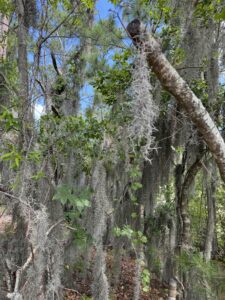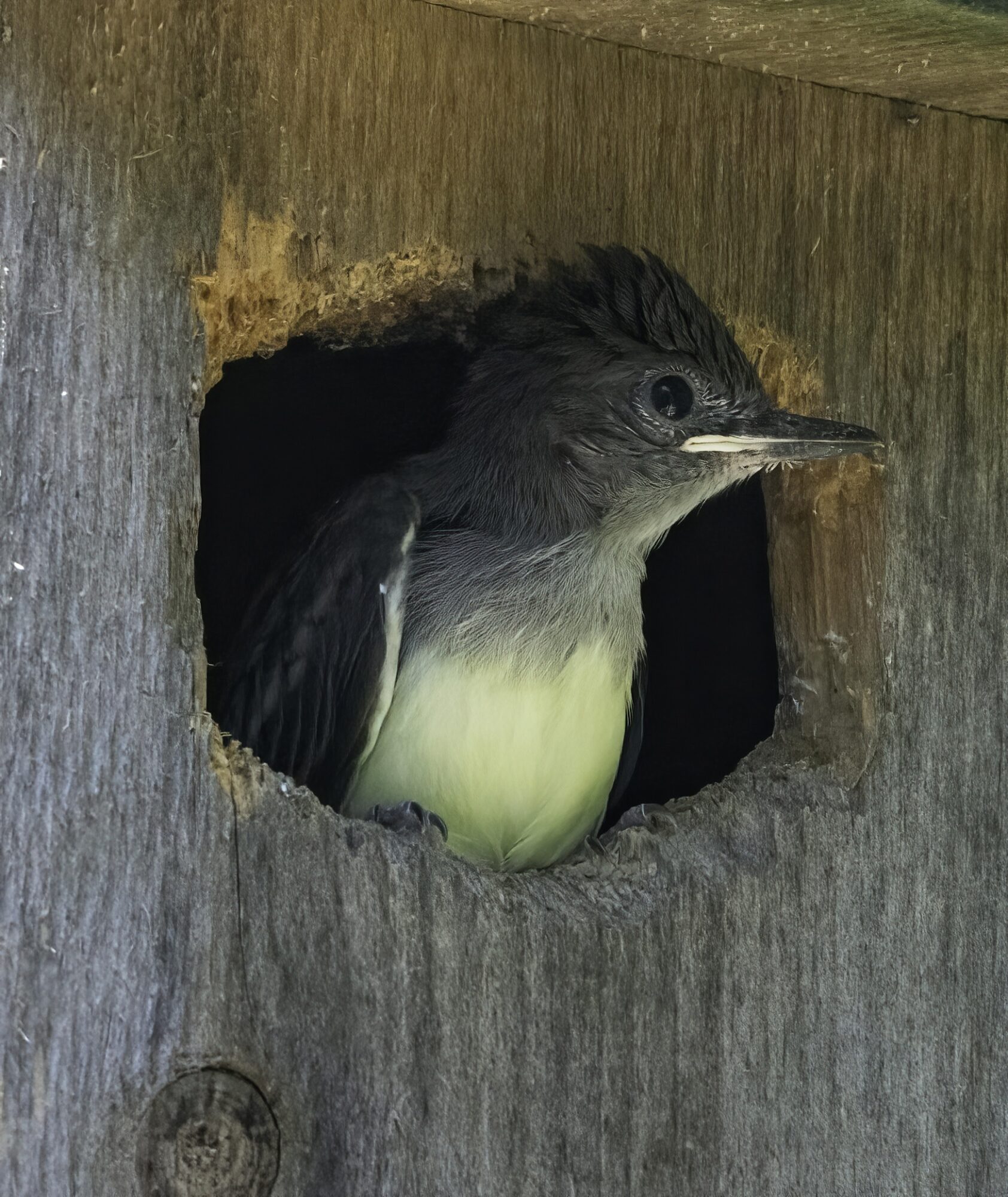
By Mary Reid Barrow
Osprey photos by Gibbs Barrow
The grand finale for participants on LRNow’s Osprey Walk at the Narrows with Reese Lukei and Robert Brown was just about perfect. We had about as close up a view of a mama and baby osprey that one could get from the ground.
That day a youngster was peering out of one of this year’s new nests and mom was fussing as if to say, “Give us a break. Haven’t you stared at us long enough?!”

The new nest is located on the north side of the Cape Henry trail not far from the overlook entrance and before you reach the bridge that crosses the marsh.
Earlier on the walk, Robert Brown pointed out a thick stand of Spanish moss under an osprey nest along 64th Street itself. This thick tangle of moss stands out from almost moss-free trees in the vicinity.

The moss grew, according to Robert who has been tracking osprey in the area of the park for more than a decade, when the male took a liking to Spanish moss as a nest decoration. The moss kept falling from the nest and the bird would bring in more. The loose moss took hold and created a localized Spanish moss garden below. And there was plenty to go round for a cozy nest above.

It seems almost like yesterday that I first reported on great crested flycatchers nesting in my flycatcher box.
And now they are gone.
Last week as I was watching, I saw one of the babies fledge by itself. I wasn’t expecting that because several years ago, I watched a baby leave the box closely escorted by a parent. But it shot out of that box like an arrow, and I felt pretty confident that it made it back to the trees behind the nest.
Soon thereafter, though I didn’t see it, I was pretty sure the other sibling had fledged too, because the parents were no longer around the box.
Now it’s so quiet. Compared to the flycatchers, great big “wheep, wheep,” the other birds sing softly.
In these photos a parent brings in a great big lunch to the fast growing youngsters and a little bit later, the well-fortified chick checks out the world beyond, shortly before it fledged.


This is update to a Nature Notes I wrote on Sourwood trees that grow in First Landing State Park.
I have been hoping to see and write about sourwood blooms ever since tree expert Allen Carter led a tree walk for LRNow. He talked about how delicious sourwood honey is and pointed out the many slender trees that grow this way and that all along the trails.
Allen just sent me this photo that he took over the weekend! See the small bloom in the center. No wonder they are hard to find!

He said the blooms were difficult to spot because all appear to be at the top of more mature trees where they get full sunlight.
He suggested looking for the trees along the interior trails in the park and also searching the ground under the trees to see if any of the very small, white petals have fallen.
See more on sourwood trees in this Nature Notes from two years ago: https://www.lynnhavenrivernow.org/naturenotes/sourwood-trees-stagger-and-reel-across-first-landing-state-park-in-un-tree-like-postures/